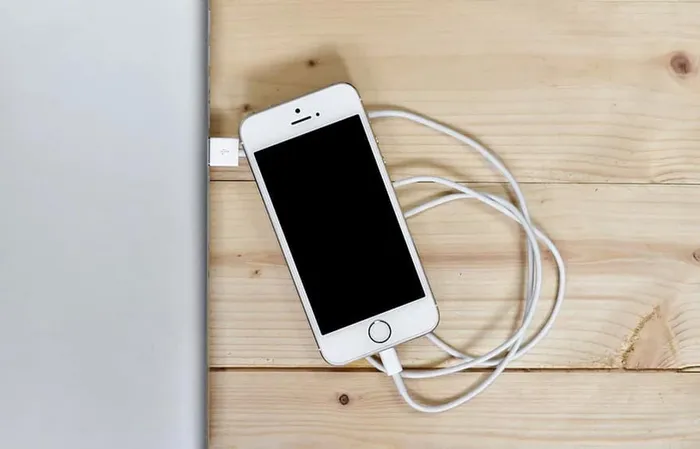How to keep your phone charged and useful in an emergency

You can charge your smartphone off a laptop. Picture: Pikist.
A smartphone can be a lifeline in an emergency, connecting you instantly to assistance and real-time resources.
If you're preparing for or in the midst of an emergency, here are some of the best ways you can get your phone in the best shape to help you.
Make your battery last:
Assume your electricity can go out at any time and plan accordingly. Charge your phone and any additional devices ahead of time, leaving them plugged in until the last minute. Also charge any back-up batteries and laptops, then make sure all charging cords are collected in one place to take with you.
If the power is out, or if you're no longer in a place with a power outlet, you'll need to make any charges last as long as possible. To do that, follow these instructions:
- Turn on low power mode on your phone if it's an option. On iPhones, go to Settings, Battery, and toggle on Low Power Mode so it's green. On many Android phones, you can swipe down from top of the screen to see your notifications, and swipe down one more time to find a shortcut to the phone's battery saver mode. Meanwhile, some recent Samsung phones offer even more aggressive ways to preserve battery life - go to Settings, then Battery and Device Care, Battery, and finally Power Saving mode to tweak these options as needed.
- Avoid draining activities. Don't use your phone as a wi-fi hotspot for other people, don't watch streaming videos and close any apps running in the background that might be using location. Turn off notifications you don't need. If you're in a safe place, you can turn off GPS to stretch the battery life.
- Wi-fi is less draining than cellular connections, so use it whenever possible. If you don't need to be in immediate contact with anyone, you can even turn on Airplane mode for maximum power saving. Unless you're planning on leaving your phone off for a long period of time, it's better not to turn it off completely.
- Turn off Background App Refresh on iPhones. Go to Settings, General, Background App Refresh. If you have an Android phone, search in your settings for a feature called Data Saver and turn it on - it will prevent all apps except the ones you've selected from sending or receiving data in the background.
- Avoid phone calls, and especially video calls, in favour of texts when possible.
- Turn down your screen's brightness.
Different ways to recharge your phone
Again, external batteries are the best to have. But in a pinch, you do have other options for recharging a device when the power is out.
- You can charge off a laptop if you have one. This is a good reason to charge your computers as well, even if you don't plan on using them.
- If there's a car available, you can connect through a USB port, whether it's built in or through a lighter-port attachment. You can charge in many (but not all) cars by just turning them on to accessory mode - meaning you just turn the key once to fire up the radio but not the engine.
Contact for other assistance
Use your phone's SOS service. Android and iOS both have built-in emergency options that will contact authorities. They also can be set up to send your current location to pre-chosen emergency contacts. It can vary depending on your device, so find out how it works ahead of time.
Share your location with friends
Your friends and family will want to know you are safe and your location in case you aren't safe.
Send your location to everyone over text, so they'll know where to look if you lose contact. If you are using a GPS location-sharing option, like the one in iPhone Messages, don't just send your current spot one time. Select the option to share it indefinitely. You can turn this off later.
On an iPhone, you can also open the Find My app, select Friends and add people to share your location with. You can share your live location with others through Google Maps, though there are some limitations.
If you're on social media and have service, drop a line to let people know you're okay.
Get apps that work when cell service is spotty
If you're struggling to find reliable internet and cellular connections, there are apps that could still help you stay in touch or give you helpful information. Download and set them up when you have plenty of bandwidth.
Zello: It's a free messaging app for Android and iOS that lets people create and join group "channels" where they can send voice messages and images to many others at once. (Think of it as a free, smartphone-based walkie-talkie.) The app cannot be used at all if you don't have an Internet connection.
Google Maps: Download the Google Maps information for surrounding areas in case you need to move fast and cell service isn't available. Put in your main location, hit the three dots in the corner, select Download Offline Map. You can crop the exact area you think you'll need.
The Washington Post
Related Topics: